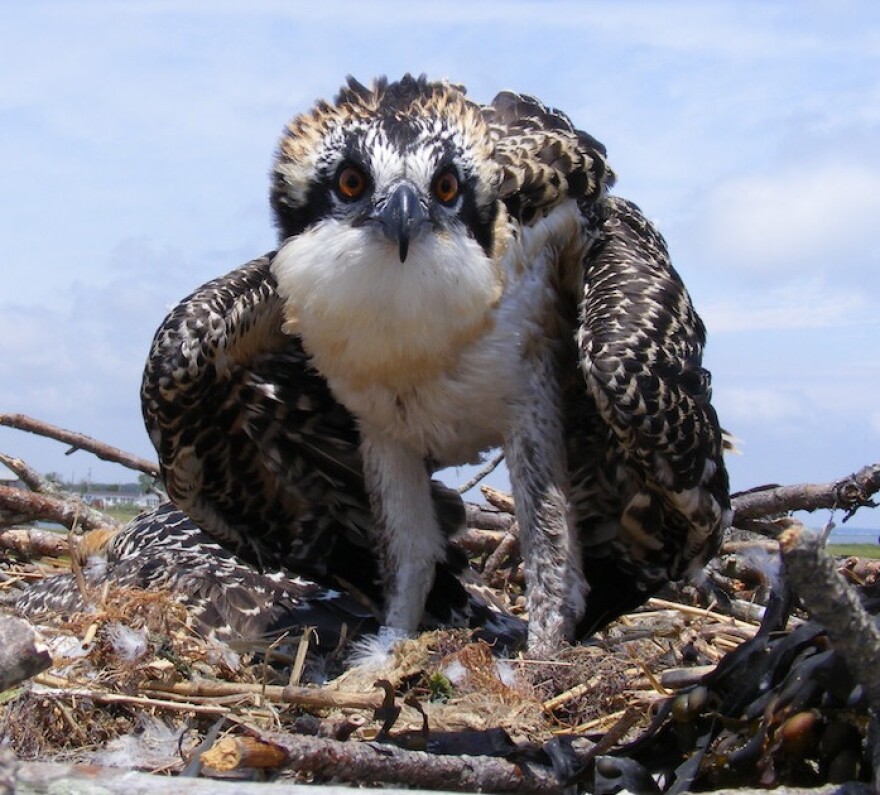Staff at the Delaware Center for the Inland Bays say ospreys are back in the bays this spring.
The center's Outreach and Education Coordinator Amy Barra says staff have noticed scattered fish parts at the James Farm Ecological Preserve in Ocean View last month — a sure sign that ospreys are back in the bays and have found enough food to support themselves
Staff also spotted a pair of osprey nesting by the Indian River Inlet Bridge and carrying fish through the air.
"It’s telling us there is food to support their breeding pairs here and we definitely have seen these birds come back from the brink," Barra said.
Once ospreys migrate to the Inland Bays, they tend to seek out a mate, Barra said.
"If they’re not already paired up, they’re going to be looking for mates and then doing any repairs or building to nest and then a lot of hunting right now, then they should be getting [ready] to lay their clutch of eggs," Barra said.
The use of a pesticide called DDT caused the osprey population to crash in the 1950s and 1960s.
Ever since the pesticide was banned in 1972, the bird has been making a comeback. According to the Center for the Inland Bays 2016 State of the Bays report, scientists counted 92 active osprey nests in 2014. In 1990, there were about 40.





